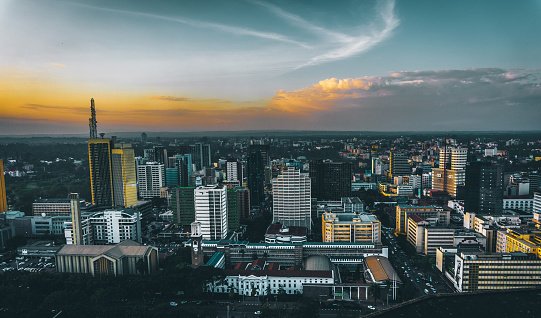Understanding the history of real estate in Kenya provides valuable insight into how the property market evolved from colonial land policies to today’s booming urban developments. Over the years, Kenya’s real estate landscape has been shaped by political changes, economic shifts, and technological advancements.
This guide explores the key milestones in the development of real estate in Kenya, including:
- Colonial-era land policies
- Post-independence reforms
- Rise of Nairobi as a regional hub
- The impact of technology and regulation
- Current trends and future outlook
Early Land Ownership Under Colonial Rule
The roots of Kenya’s modern real estate system lie in the colonial era, when British settlers acquired vast tracts of fertile land through policies that favored European ownership.
Key Features:
- Large-scale farms and estates owned by Europeans
- Displacement of indigenous communities
- Introduction of land registration systems
- Creation of racially segregated neighborhoods
These policies created long-lasting inequalities in land distribution, many of which still influence property access today

Post-Independence Land Reforms (1963–1980)
After gaining independence in 1963, Kenya began restructuring land ownership to promote local participation and reduce disparities.
Major Developments:
- Transfer of land from settler ownership to African citizens
- Establishment of institutions like the Ministry of Lands and Housing
- Encouragement of cooperative societies for group land ownership
- Introduction of legal frameworks to govern property transactions
Despite progress, land consolidation remained slow, and disputes over colonial-era allocations persisted.
Urbanization and Property Development in the 1980s–2000s
As Kenya’s population grew, so did demand for housing — especially in Nairobi and Mombasa. This period saw rapid urban expansion and informal settlement growth due to inadequate planning.
Key Trends:
- Rise of informal settlements like Kibera and Mathare
- Expansion of residential suburbs such as Eastleigh and Buruburu
- Growth of private developers and construction companies
- Increased demand for rental properties due to rural-urban migration
While this era saw increased property activity, it was also marked by unregulated land deals and rising slum areas.

The 2010 Constitution and Land Act Reforms
A major turning point came with the 2010 Kenyan Constitution, which redefined land ownership, use, and management.
Landmark Changes:
- Creation of the National Land Commission (NLC)
- Cancellation of dual land registries under the old system
- Strengthened land rights for women and marginalized groups
- Standardized procedures for property transfers and leasing
These reforms laid the foundation for a more transparent and regulated real estate environment.
Rise of Technology and Digital Platforms (2010–Present)
The last decade has seen a digital transformation in the real estate sector, making property transactions faster, safer, and more accessible.
Key Developments:
- Launch of online listing platforms like Realestate.co.ke and Jengo Homes
- Integration of GIS mapping and virtual property tours
- Mobile-based payment and CRM tools for agents and buyers
- Government digitization of land records and NLC licensing
Digital real estate is now a cornerstone of the industry, attracting both local and international investors.

Government Initiatives and Affordable Housing (2017–Present)
To address the growing demand for affordable homes, the government launched the Big Four Agenda, with housing as a key pillar.
Components of the Affordable Housing Scheme:
- Subsidized mortgages for middle and low-income earners
- Bulk land acquisition and standardized housing plans
- Partnerships with private developers
- Lower interest rates and flexible payment plans
This initiative is expected to significantly increase homeownership and reshape the real estate ecosystem in the coming years.
Real Estate Boom in Nairobi and Coastal Cities
In recent years, Nairobi has emerged as one of Africa’s most dynamic real estate markets, driven by its role as a tech and business hub.
Nairobi’s Real Estate Growth:
- Skyrocketing demand in Westlands, Lavington, and Karen
- Rise of high-rise apartments and mixed-use developments
- Increased foreign investment in commercial and residential properties
Meanwhile, coastal cities like Mombasa and Malindi have attracted retirees and expatriates seeking beachfront living and lifestyle-driven investments.

Role of Foreign Investment in Kenya’s Property Market
Foreign interest in Kenyan real estate has grown steadily, particularly in upscale neighborhoods and coastal regions.
Investor Profiles:
- Expatriates working in Nairobi’s tech and diplomatic sectors
- Retirees from Europe and North America
- International developers and institutional investors
While foreigners cannot own land on a freehold basis, they can lease property for up to 99 years, making Kenya an attractive destination for long-term investment.
Challenges and Lessons from Kenya’s Real Estate Past
Kenya’s real estate history offers important lessons for the future:
- Land tenure insecurity – Resulting from unclear titles and historical injustices
- Speculation and fraud – Due to weak enforcement in earlier decades
- Informal settlements – Caused by inadequate housing policies
- Slow transfer processes – A legacy issue being addressed through digitization
Addressing these challenges remains crucial for sustainable growth and equitable access to land and housing.
The Future of Real Estate in Kenya
With strong regulatory reforms, increasing urbanization, and growing investor confidence, Kenya’s real estate market is poised for continued growth.
Emerging Trends:
- Smart city developments like Konza Technopolis
- Rise of REITs (Real Estate Investment Trusts)
- Expansion of satellite towns such as Ruiru and Machakos
- Green building initiatives and eco-friendly housing
- Continued digital innovation in property marketing and sales
These developments indicate a promising future for real estate in Kenya, built on transparency, inclusivity, and modern infrastructure.
Frequently Asked Questions
How has real estate changed in Kenya since independence?
From post-colonial land redistribution to digital platforms and REITs, Kenya’s real estate market has become more structured and inclusive.
When did real estate become formalized in Kenya?
Formalization accelerated after the 2010 Constitution and the introduction of the Real Estate (Regulation and Development) Act, 2012.
Can foreigners invest in real estate in Kenya?
Yes, through leasehold agreements (up to 99 years), joint ventures, or local entities.
Conclusion
The history of real estate in Kenya reflects the country’s socio-economic evolution — from colonial land control to modern-day regulation and digital transformation. Understanding this progression helps current and future investors navigate the market with better awareness and strategy.
As Kenya continues to grow and reform its property laws, the future looks bright for real estate investors who understand the past and adapt to new opportunities.

Join The Discussion